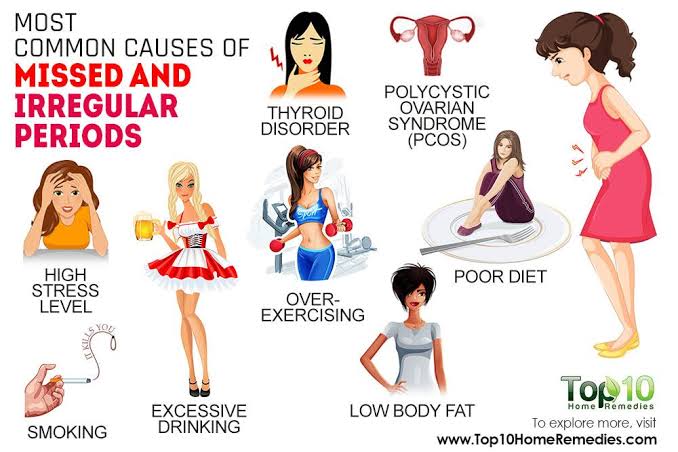Painful and heavy periods. Heavy Periods and Painful Menstruation: Causes, Symptoms, and Management
What causes heavy menstrual bleeding and painful periods? How can they be diagnosed and treated?. Here are the key facts about menorrhagia and dysmenorrhea.
Understanding Menorrhagia and Dysmenorrhea
Menorrhagia, or heavy menstrual bleeding, and dysmenorrhea, or painful periods, are common gynecological issues that can significantly impact a woman’s quality of life. These conditions have various underlying causes and require comprehensive evaluation and management by experienced healthcare providers.
Causes of Heavy Periods and Painful Menstruation
Several factors can contribute to irregular, heavy, and painful periods, including:
- Adenomyosis: When the endometrial tissue that normally lines the inside of the uterus grows into the uterine muscle wall.
- Bleeding disorders: Inherited conditions like von Willebrand’s disease that affect blood clotting.
- Gynecological cancers: Cervical and uterine cancers can lead to abnormal bleeding.
- Endometriosis: The presence of endometrial-like tissue outside the uterus.
- Medications: Certain anticoagulants, anti-inflammatory drugs, and hormonal medications.
- Polycystic ovary syndrome (PCOS): A hormonal disorder that can cause irregular periods.
- Pregnancy complications: Miscarriage or ectopic pregnancy.
- Premature ovarian failure: When the ovaries stop functioning before age 40.
- Uterine fibroids: Noncancerous tumors in the uterine wall.
- Uterine polyps: Overgrowth of endometrial tissue forming growths inside the uterus.
- Hormonal imbalances: Often related to the perimenopausal period.
Symptoms of Heavy Periods and Painful Menstruation
The signs and symptoms of menorrhagia and dysmenorrhea can include:

- Bleeding for more than seven days
- Soaking through one or more tampons or pads per hour for several hours
- Need to use multiple pads to control menstrual flow
- Changing pads or tampons during the night
- Menstrual flow with blood clots larger than a quarter
- Flooding of clothing and bedsheets with menstrual bleeding
- Symptoms of anemia, such as fatigue and shortness of breath
- Diarrhea
- Headaches
- Lower back pain
- Nausea
- Pain that starts a few days before the period, worsens during the period, and lasts two to three days after
- Throbbing or cramping pain in the lower abdomen
Diagnosis of Heavy Periods and Painful Menstruation
When a patient experiences abnormal menstrual bleeding or severe menstrual pain, their healthcare provider will conduct a thorough evaluation, which may include:
- Physical exam
- Review of medical history, including details of the patient’s menstrual cycle
- Discussion of symptoms
- Blood tests to check for iron deficiency, thyroid disorders, or blood-clotting abnormalities
- Ultrasound to examine the pelvic organs for any abnormalities
- Pap smear to check for cervical changes or infection
- Endometrial biopsy to sample the uterine lining for examination
- MRI scans to further evaluate the uterus and pelvic region
Expert Management of Heavy Periods and Painful Menstruation
UT Southwestern’s gynecologic specialists are nationally recognized for their expertise in women’s health care, including the management of menorrhagia and dysmenorrhea. They work closely with patients to determine the underlying cause and develop a comprehensive treatment plan tailored to the individual’s needs.
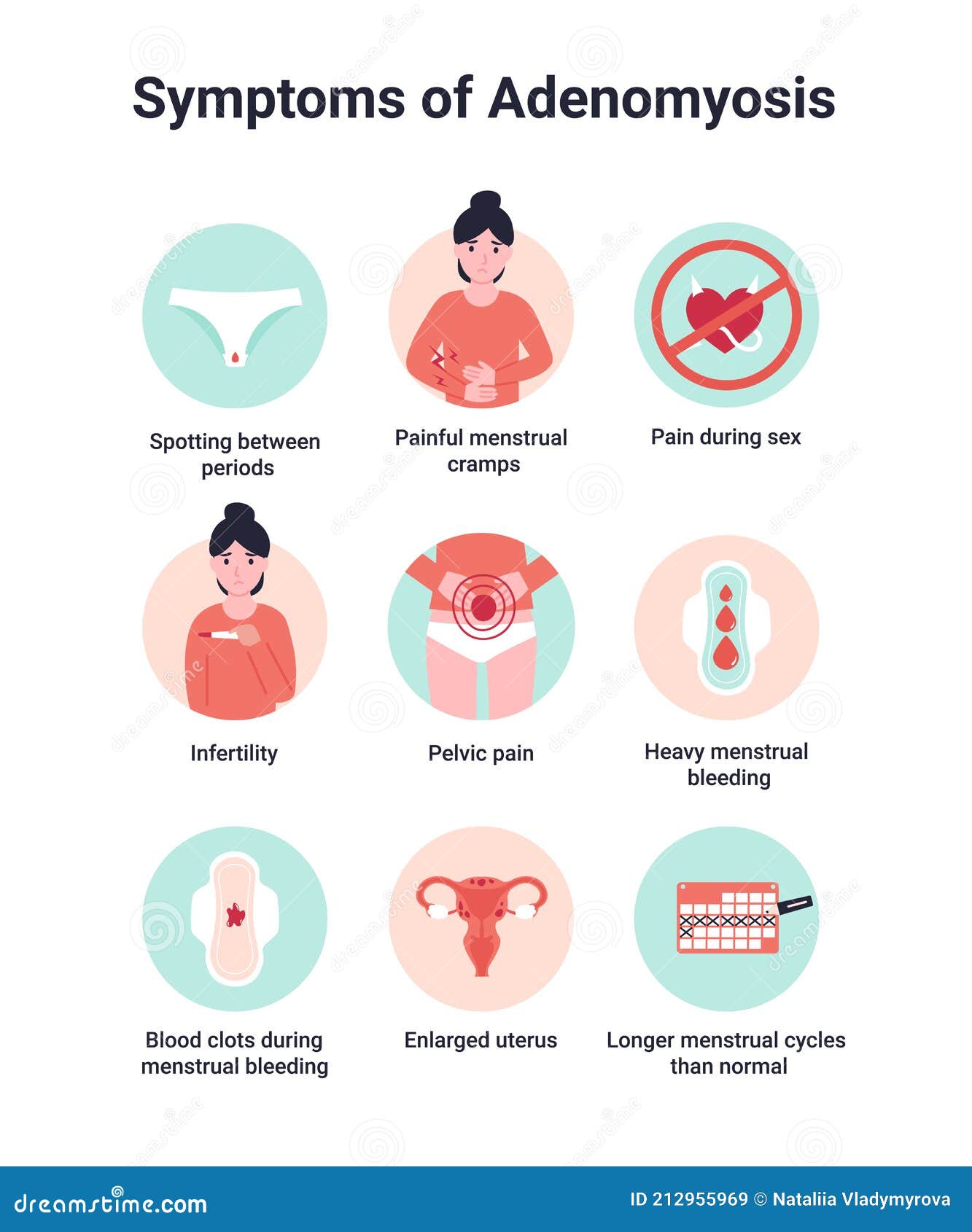
Seeking Medical Attention
Patients should seek medical attention if they experience any of the following:
- Their periods stop for more than 60 days
- Their periods become erratic
- Their periods are less than 21 days or more than 35 days apart
- They bleed between periods
- They bleed after sex
- They have any vaginal bleeding after menopause
- They suddenly get a fever and feel sick after using tampons
By seeking prompt medical attention and working closely with experienced gynecologic specialists, women can find effective solutions to manage heavy, irregular, and painful periods, improving their overall quality of life.
Painful Periods and Heavy Bleeding | Condition
UT Southwestern specialists have extensive experience in diagnosing the causes of irregular menstrual bleeding. For women who experience heavy bleeding and painful periods, our specially trained gynecologists can determine if there is a cause for concern.
Expert Management for Painful Periods and Heavy Bleeding
For most women, menstrual cycles occur about every 28 days, and periods last four to seven days. Abnormal menstruation includes problems such as heavy bleeding, known as menorrhagia, irregular menstrual bleeding, and pain during periods, known as dysmenorrhea.
UT Southwestern gynecologic surgeons, specialists, and their teams are nationally recognized for their expertise in women’s health care. We participate in research to improve diagnosis, management, and treatment for heavy, irregular, painful periods. Our specialists are also faculty members, dedicated to educating future women’s health doctors and other care providers.
Causes of Painful Periods and Heavy Bleeding
Some common reasons for irregular, heavy, and painful periods include:
- Adenomyosis: Endometrial tissue, which normally lines the inside of the uterus, grows into the muscle wall of the uterus
- Bleeding disorders: Certain inherited bleeding disorders, such as von Willebrand’s disease, which prevents blood from clotting properly, can cause abnormal bleeding
- Cancer: Cervical cancer and uterine cancer can cause heavy menstrual bleeding
- Endometriosis: Endometrial-like tissue grows on the outside of the uterus or on the ovaries, fallopian tubes, or other nearby organs
- Medications: Certain anticoagulants (blood thinners), anti-inflammatory medications, or hormonal medications can lead to heavy menstrual bleeding
- Polycystic ovary syndrome (PCOS): PCOS is a hormonal disorder that can cause small cysts, or fluid-filled sacs, to develop in the ovaries, causing irregular periods
- Pregnancy complications: A miscarriage or ectopic pregnancy can cause heavy bleeding
- Premature ovarian failure: This condition occurs when a woman’s ovaries stop working before age 40, leading to irregular periods and possible infertility
- Uterine fibroids: Noncancerous tumors made up of muscle tissue can grow in the walls of the uterus, the lining inside the uterus (endometrial cavity), or on the outside of the uterus
- Uterine polyps: Overgrowth of endometrial tissue can form growths called polyps inside the uterus
- Hormonal imbalances: Can be due to PCOS or is often related to the perimenopausal period when normal cycles in monthly hormones become out of balance
Symptoms of Painful Periods and Heavy Bleeding
Signs and symptoms of heavy menstrual bleeding include:
- Bleeding for more than seven days
- Bleeding that soaks through one or more tampons or pads every hour for several hours in a row
- Need to use multiple pads to control menstrual flow
- Need to change pads or tampons during the night
- Menstrual flow with blood clots larger than a quarter
- Flooding of clothing and bedsheets with menstrual bleeding
- Symptoms of anemia, such as fatigue and shortness of breath
Symptoms of menstrual pain include:
- Diarrhea
- Headaches
- Lower back pain
- Nausea
- Pain that starts a few days before the period, worsens during the period, and lasts two to three days after the period ends
- Throbbing or cramping pain in the lower abdomen that can be intense
- Lower back pain during menses
Patients should see their doctors if:
- Their periods stop for more than 60 days
- Their periods become erratic
- Their periods are less than 21 days or more than 35 days apart
- They bleed between periods
- They bleed after sex
- They have any vaginal bleeding after menopause
- They suddenly get a fever and feel sick after using tampons
Diagnosis of Painful Periods and Heavy Bleeding
UT Southwestern’s experienced gynecologists conduct a thorough evaluation, which includes a:
- Physical exam
- Review of personal medical history, including details of the patient’s menstrual cycle
- Discussion of symptoms
Patients should bring information about the dates and lengths of their last several periods. For sexually active patients, a pelvic exam will be performed to check for infections and to examine the cervix.
For sexually active patients, a pelvic exam will be performed to check for infections and to examine the cervix.
To diagnose heavy bleeding and painful periods, our doctors usually recommend one or more tests, such as:
- Blood tests to look for signs of iron deficiency, thyroid disorders, or blood-clotting abnormalities
- Ultrasound: Diagnostic tools that use sound waves to produce images of the pelvic organs. Used to look for any abnormalities
- Pap smear: Sample of cells from the cervix that are examined under a microscope for infection or changes that can lead to cancer or already are cancerous
- Endometrial biopsy: A test that samples a small amount of endometrial tissue for examination under a microscope
- Magnetic resonance imaging (MRI) scans: Equipment that uses a large magnet and radio waves to produce detailed images of pelvic organs
Based on the results of these tests, we might recommend further testing, such as:
- Hysteroscopy: Examination of the inside of the uterus using a hysteroscope, a slender, lighted device inserted through the vagina and cervix.
 This allows direct visualization of the inside of the uterus
This allows direct visualization of the inside of the uterus - Sonohysterography: Test that involves injecting fluid into the uterus via a thin tube through the vagina and cervix and then taking ultrasound images of the uterus
Treatment for Painful Periods and Heavy Bleeding
Painful Periods
If the painful periods are not relieved with over-the-counter medications or start to interfere with daily activities, our physicians might be able to offer relief.
Our doctors might recommend:
- Nonsteroidal anti-inflammatory drugs (NSAIDs). If over-the-counter NSAIDs such as ibuprofen (Advil or Motrin) or naproxen (Aleve) don’t relieve symptoms, prescription NSAIDs might be prescribed.
- Hormonal birth control. Birth control prescriptions contain hormones that can help regulate hormone levels throughout the month and reduce the severity of menstrual cramps. In addition to pills, these hormones also can be delivered by an injection, a patch, an implant placed under the skin of the arm, or a flexible ring that is inserted into the vagina.
 Another good option, even in teens, is an intrauterine device (IUD) that contains a hormone called progesterone. These methods can be very effective in managing symptoms, even if patients are not sexually active.
Another good option, even in teens, is an intrauterine device (IUD) that contains a hormone called progesterone. These methods can be very effective in managing symptoms, even if patients are not sexually active. - Surgery. If painful periods are caused by polyps or fibroids, surgical removal of the abnormal tissue can help reduce the symptoms. Many uterine-sparing, fertility-sparing, and definitive surgical options exist to help with these symptoms.
Heavy Bleeding
Our treatment for heavy bleeding is based on the amount of bleeding. Many approaches involve hormone therapy and other nonhormonal medical therapies. If there is a reason estrogen should not be prescribed, an oral progestin might be recommended. Over-the-counter treatments such as ibuprofen can help decrease the amount of bleeding and pain, as well.
Clinical Trials
As one of the nation’s top academic medical centers, UT Southwestern offers a number of clinical trials aimed at improving screening, diagnosis, and treatment of painful periods and heavy bleeding.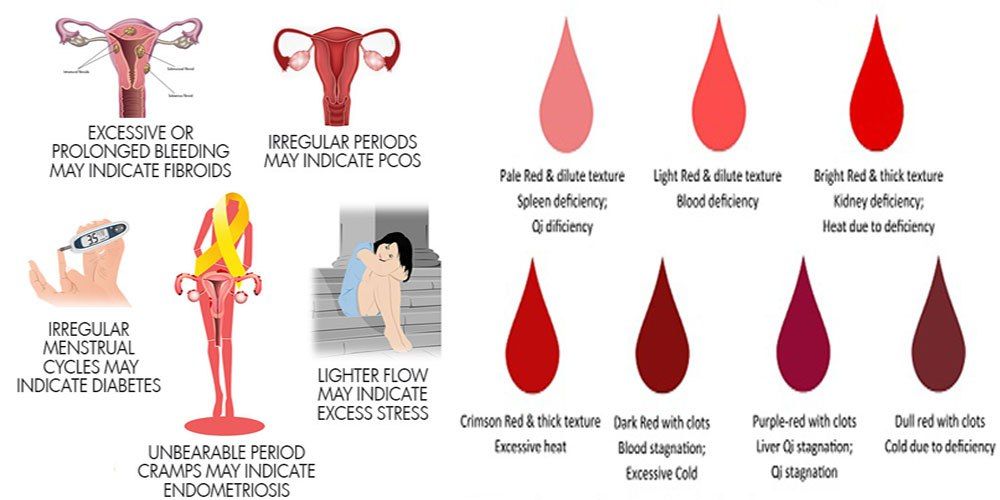
Clinical trials often give patients access to leading-edge treatments that are not yet widely available. Eligible patients who choose to participate in one of UT Southwestern’s clinical trials might receive treatments years before they are available to the public.
See More
Pediatrics;
Women’s Health
- Nirupama DeSilva, M.D.
- Jason Jarin, M.D.
August 31, 2022
Prevention;
Women’s Health
March 27, 2019
Pediatrics;
Prevention;
Women’s Health
- Ayesha Zia, M.
 D.
D.
January 31, 2019
More Articles
Results: 2 Locations
1935 Medical District Drive
Dallas, Texas 75235
214-730-5437
Directions
to
Children’s Medical Center of Dallas
at UT Southwestern Pediatric Group at Plano
7609 Preston Road,
3rd Floor
Plano, Texas 75024
469-497-2501
Directions
to
Pediatric Adolescent Gynecology
Parking Info
for
Pediatric Adolescent Gynecology
Heavy periods – NHS
Heavy periods (also called menorrhagia) are common and may just be normal for you.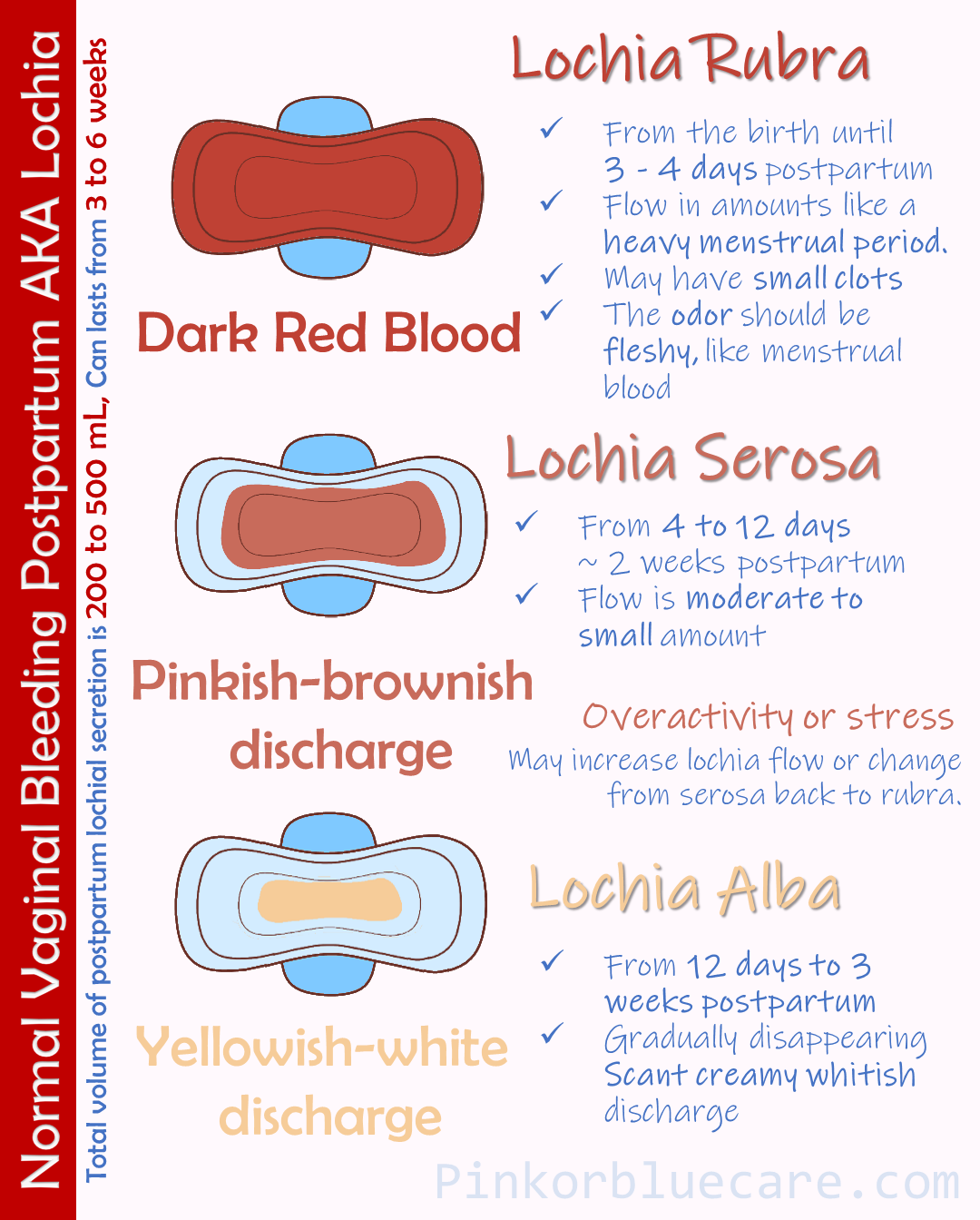 Treatment can help if they’re affecting your daily life.
Treatment can help if they’re affecting your daily life.
Check if you have heavy periods
You may have heavy periods if you:
- need to change your pad or tampon every 1 to 2 hours, or empty your menstrual cup more often than is recommended
- need to use 2 types of sanitary product together, such as a pad and a tampon
- have periods lasting more than 7 days
- pass blood clots larger than about 2.5cm (the size of a 10p coin)
- bleed through to your clothes or bedding
- avoid daily activities, like exercise, or take time off work because of your periods
- feel tired or short of breath a lot
Causes of heavy periods
It can be normal to have heavy periods.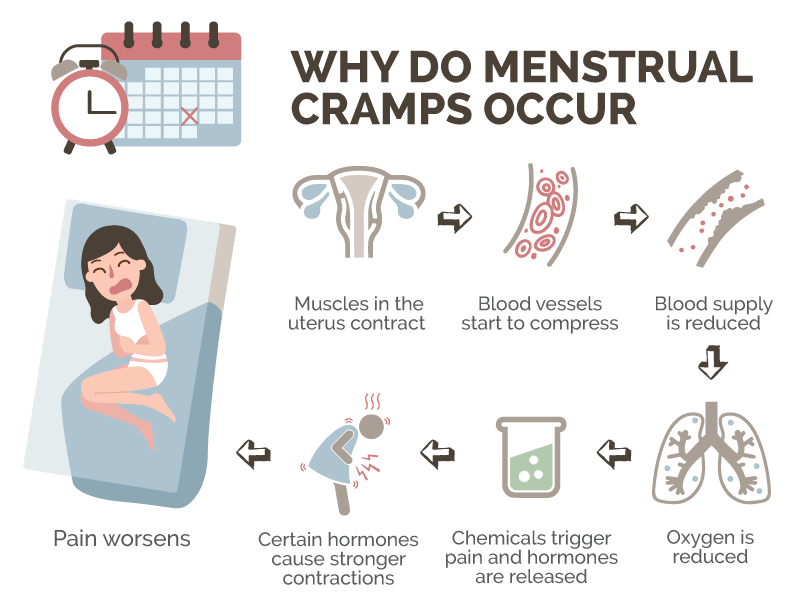
They can sometimes be heavy at different times, like when you first start your periods, after pregnancy or during menopause.
Sometimes, they can be caused by:
- conditions affecting your womb, ovaries or hormones, such as polycystic ovary syndrome, fibroids, endometriosis and pelvic inflammatory disease
- some medicines and treatments, including some anticoagulant medicines and chemotherapy medicines
- stress and depression
Rarely, heavy periods can be a sign of womb cancer.
Non-urgent advice: See a GP if:
- heavy periods are affecting your life
- you’ve had heavy periods for some time
- you have severe pain during your periods
- you bleed between periods or after sex
- you have heavy periods and other symptoms such as pain when peeing, pooing or having sex
What we mean by severe pain
- Severe pain:
- always there and so bad it’s hard to think or talk
- you cannot sleep
- it’s very hard to move, get out of bed, go to the bathroom, wash or dress
- Moderate pain:
- always there
- makes it hard to concentrate or sleep
- you can manage to get up, wash or dress
- Mild pain:
- comes and goes
- is annoying but does not stop you doing daily activities
Treatment for heavy periods
Heavy periods do not always need to be treated.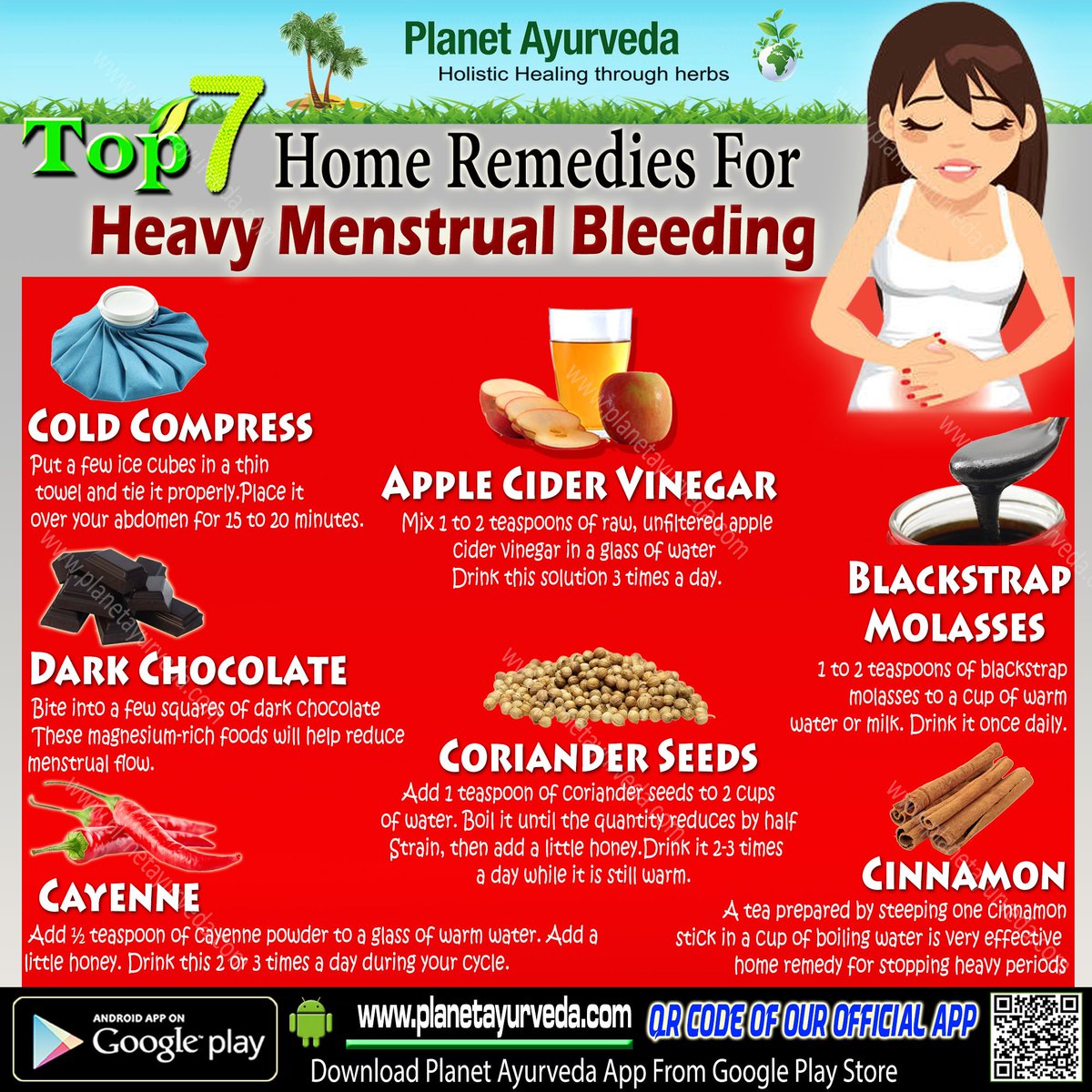 But there are treatments that can help if they’re affecting your daily life.
But there are treatments that can help if they’re affecting your daily life.
Treatments from a GP include:
- some types of contraception, such as an intrauterine system (IUS) or the combined contraceptive pill
- medicine to help reduce the bleeding, such as tranexamic acid
- prescription-only anti-inflammatory painkillers, such as mefenamic acid or naproxen
You should have a blood test to check if you have iron deficiency anaemia.
If these treatments do not work or a GP thinks a condition may be causing your heavy periods, they’ll usually refer you for tests or to see a specialist.
Page last reviewed: 03 November 2021
Next review due: 03 November 2024
Painful periods: causes, treatment, prevention
The article was checked by the doctor: Sokolova Marina Olegovna
Degrees of pain severity
Pain during menstruation is called dysmenorrhea (outdated names – algomenorrhea and algomenorrhea). According to statistics, approximately 80% of women suffer from menstrual pain of varying severity.
According to statistics, approximately 80% of women suffer from menstrual pain of varying severity.
Usually, discomfort develops within the first 4 hours after the onset of menstruation and lasts for 1-2 days. However, in severe cases, pain can occur a few days before the onset of menstruation and continue for several days or until the very end of menstruation.
Dysmenorrhea has 3 degrees:
- Mild – such pains are insignificant, are observed only on the first day of menstruation, are not accompanied by other symptoms and do not interfere with the usual way of life.
- Moderate – pain can last up to 2-3 days of menstruation, there are also other signs of malaise (nausea, weakness, headache), and although unpleasant sensations bring discord into the usual rhythm of life, the patient does not lose her ability to work and can go to work or study.
- Severe – pain develops even before the onset of menstruation and can continue until it ends, the ability to work is significantly reduced or completely lost, the accompanying symptoms are also strongly pronounced.

Call right now
+7 (495) 215-56-90
Make an appointment with a gynecologist
Associated symptoms
Painful periods may be accompanied by other manifestations:
- Deterioration of vascular function: manifested by swelling of the face, numbness of the extremities, arrhythmias, headaches and dizziness.
- Emotional and mental disorders: insomnia, drowsiness, irritability, sensitivity to smells, changes in eating habits, depression, bulimia, anxiety.
- Symptoms of disorders of the autonomic nervous system: digestive disorders, bloating, dry mouth, fever, chills, nausea, vomiting, belching, frequent urination, increased sweating, fainting.
- Signs of metabolic disorders: itching, weakness, feeling of cottony legs, edema of different localization.
Classification and causes of dysmenorrhea
Get expert advice:
- Gynecologist
- Pediatric gynecologist
Why menstruation is painful depends on the type of dysmenorrhea. She may be:
She may be:
- Primary (spastic functional) – developing without previous pathological changes in the pelvic organs.
- Secondary (organic) – due to congenital or acquired diseases.
Primary dysmenorrhea often affects adolescents and young women. After giving birth, she is able to disappear. For many patients, the pain subsides after the age of 25. As a rule, primary dysmenorrhea develops 1.5–2 years after the onset of the first menstruation, when the menstrual cycle is established.
The causes of primary dysmenorrhea were established only in the 2nd half of the 20th century. Previously, they adhered to the version expressed by Hippocrates. He believed that the pains were caused by a pathological narrowing of the cervical (cervical) canal, which disrupted the outflow of menstrual blood. However, in the 20th century it was proved that the surgical expansion of the cervical canal does not affect either the presence or the intensity of painful sensations. Then there was a theory that dysmenorrhea occurs against the background of psychosomatic disorders.
Then there was a theory that dysmenorrhea occurs against the background of psychosomatic disorders.
And only in the 50s of the last century it was found that the development of pain is associated with the process of rejection of the endometrium (the inner lining of the uterus) during menstruation. Normally, the inner mucous layer of the uterus is replaced by a new one every month. The old one comes out with menstrual blood. The uterus contracts to shed the endometrium.
Then prostaglandins (hormone-like substances) E2 and F2a were discovered. They are produced by the endometrium and are needed for the contractile activity of the uterus. However, in women with dysmenorrhea, these prostaglandins are found in the endometrium, myometrium (the muscular wall of the uterus) and menstrual blood in high amounts or a change in their ratio. An increase in their level entails an increase in myometrial contractions, and a change in the ratio of E2 and F2a causes vascular spasms and impaired local blood circulation, which leads to oxygen starvation of cells and the activity of nerve endings. This contributes to the development of pain. It was found that in women with dysmenorrhea, the frequency of contractions of the myometrium and intrauterine pressure is at least 2 times higher than in patients who do not experience menstrual pain.
This contributes to the development of pain. It was found that in women with dysmenorrhea, the frequency of contractions of the myometrium and intrauterine pressure is at least 2 times higher than in patients who do not experience menstrual pain.
Why the production of prostaglandins rises is still not exactly established. The most popular version is that the cause of this process is an increase in the amount of female sex hormones progesterone and estradiol (estrogen). Estrogen levels rise during ovulation, and progesterone levels rise after it.
There is a risk group that includes women with an increased likelihood of developing primary dysmenorrhea:
- Professional athletes, representatives of professions associated with hard physical labor (this type of activity also affects the intensity of pain).
- Patients with a genetic predisposition: if the mother or grandmother suffers from menstrual pain, the risk of dysmenorrhea increases to 30%.

- Nulliparous women.
- Overweight patients.
Also, the development of primary dysmenorrhea can provoke:
- Infectious diseases (including sexually transmitted infections).
- Hypothermia or overheating of the body.
- Stress.
- Emotional and mental overload.
Secondary dysmenorrhea develops against the background of diseases: more often gynecological. These include:
- Congenital anomalies of the uterus: underdevelopment, pathological location (bend).
- Inflammatory processes in the internal genital organs (for example, inflammation of the appendages).
- Endometriosis and adenomyosis – proliferation of cells of the inner lining of the uterus.
- Ectopic pregnancy.
- Polyps, uterine fibroids – benign neoplasms.
- Stagnation of blood in the pelvic organs.
Dysmenorrhea can also be caused by non-gynecological diseases:
- Disorders of the gastrointestinal tract (most often – irritable bowel syndrome).

- Inflammatory processes in the organs of the urinary system.
Help! Pain during menstruation can also develop after pelvic surgery or after insertion of an intrauterine device.
Diagnosis of dysmenorrhea
You should consult a doctor if the pain during menstruation is severe and significantly reduces the quality of your life. And you should immediately make an appointment in the following cases:
- You have developed dysmenorrhea for the first time.
- Pain lasts more than a week.
- The pain syndrome is unbearable.
- Dysmenorrhea is accompanied by an increase in body temperature or an increase in the amount of menstrual flow.
The gynecologist will collect an anamnesis, conduct an examination and prescribe additional studies, which may include:
- Ultrasound of the pelvic organs.
- Tests for sexually transmitted infections.

- Pregnancy test.
- Hysteroscopy (if neoplasms are suspected) – examination of the cervical canal and uterine cavity from the inside using optical equipment.
Based on the examination and the results of the research, the doctor will find out why the menstruation is painful and prescribe the appropriate therapy.
Treatment of dysmenorrhea
If dysmenorrhea is secondary, that is, caused by other pathologies, then these diseases are treated. With primary dysmenorrhea, complex therapy is carried out. Appointed:
- Medications.
- Therapeutic exercise.
- Reflexology.
- Diet (with excessive body weight).
The main drugs used in the treatment of dysmenorrhea can be divided into 5 groups:
- Gestagens are synthetic analogs of female sex hormones: they help get rid of hormonal fluctuations and reduce the contractile activity of the myometrium.
- Non-steroidal anti-inflammatory drugs – reduce the level of prostaglandins and reduce pain.

- Oral hormonal contraceptives – reduce the amount of menstrual flow and uterine contractions.
- Analgesics – pain relievers.
- Antispasmodics – eliminate spasms of blood vessels and smooth muscles.
Also, the patient may be prescribed hypnotics and tranquilizers to eliminate signs of emotional and mental disorders.
Prevention of menstrual pain
Moderate menstrual pain that occurs in a healthy woman can be prevented with preventive measures. These include:
- Diet – 15 days before the onset of menstruation, it is necessary to give up salty, excessively fatty, spicy foods and carbonated drinks, and a few days – from coffee; the diet should consist of vegetables, fruits, lean meats, fish and seafood (they contain omega-3 acids that have an anti-inflammatory effect).
- Non-steroidal anti-inflammatory drugs (NSAIDs) 2-4 days before your period (ibuprofen, aspirin, etc.) – these help lower prostaglandin levels, but you should always consult your doctor about taking them, as they can have a negative effect on the gastric mucosa, and in some diseases they should not be used or should be used with caution.

- Reasonable physical activity, such as yoga – the pain becomes less pronounced.
- Phytotherapy – the production of prostaglandins decreases with the use of blackcurrant and evening primrose oils, fennel or tea from it can reduce the number of uterine contractions, ginger tea relieves vasospasm (phytopreparations are also taken after consulting a doctor).
- Avoidance of stressful situations and good sleep.
If the pain still arose, then massage of the lumbar and sacral region will help to reduce them.
Share:
How to get through hard times and not break down
Society
2553
Share
How can we survive in difficult times? This is the main question that people are asking now. Psychologists say we can rewire our brains to stay calm and collected just by remembering things that life is grateful for. Now being collected is no longer a choice – it is a necessity. Whoever can stay positive wins. It’s hard now, tomorrow, perhaps, it will also be difficult, but the day after tomorrow everything will definitely get better.
Psychologists say we can rewire our brains to stay calm and collected just by remembering things that life is grateful for. Now being collected is no longer a choice – it is a necessity. Whoever can stay positive wins. It’s hard now, tomorrow, perhaps, it will also be difficult, but the day after tomorrow everything will definitely get better.
Whether you are facing a global crisis, a personal crisis, or a combination of the two, these tips will help you find your way out.
Photo: Global Look Press
The world has been moving from one crisis to another lately, for many of us this is a time of unprecedented struggle and upheaval. We have survived a global pandemic, dramatic changes in our daily lives, economic, political and social upheavals, as well as many natural disasters. In addition, there are personal traumas that people also face, such as the loss of a loved one, deteriorating health, unemployment, divorce, violent crime, and tragic accidents.
Experiencing difficult times can seriously affect your mood, health and outlook, making you feel helpless and overwhelmed by stress and anxiety. Perhaps you are overwhelmed with many complex, conflicting emotions and you do not know how to move on with your life. You may even feel like your life is completely out of control and you are powerless to influence what might happen next.
While there is no way to avoid the sadness, adversity and suffering of life, there are ways to regain a sense of control over the situation. Control is the ability to deal with change and trauma, which has always been an integral part of life.
Build your resilience
Build your resilience to help you adapt to life-changing events, cope with difficult times, and recover from tragedy.
If you are sensitive to emotional stress and find it difficult to cope with adversity, it is important not to think of it as some kind of character flaw. Resilience is not a permanent quality, it is an ongoing process that requires effort to build and maintain.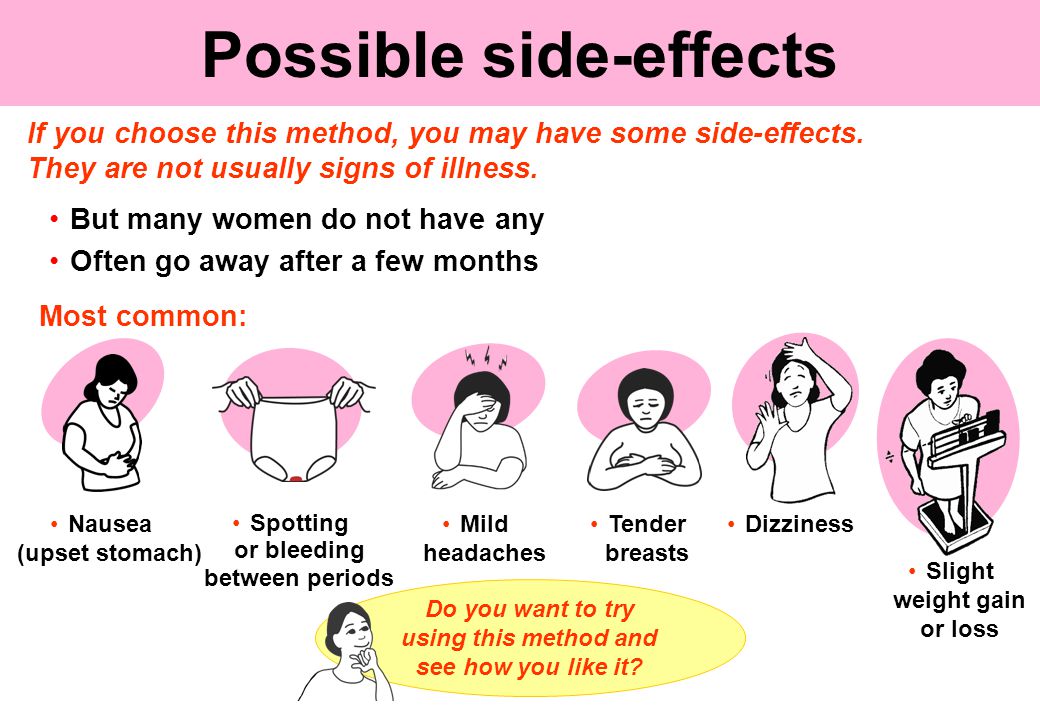 If you have not experienced major adversity in your life before, it is unlikely that you have had the opportunity to develop the quality of resilience. However, using resonant past experiences can help you deal with the challenges you face today. If you have tried to cope with some negativity in the past, then at least you will weed out ways that do not help, for example, trying to muffle your feelings with alcohol. While it’s hard to get something positive out of a traumatic experience, try to find the positive in the difficulties you’ve had in the past. It can lead you to important actions, strengthen your resolve, deepen your empathy, and set you on the right path.
If you have not experienced major adversity in your life before, it is unlikely that you have had the opportunity to develop the quality of resilience. However, using resonant past experiences can help you deal with the challenges you face today. If you have tried to cope with some negativity in the past, then at least you will weed out ways that do not help, for example, trying to muffle your feelings with alcohol. While it’s hard to get something positive out of a traumatic experience, try to find the positive in the difficulties you’ve had in the past. It can lead you to important actions, strengthen your resolve, deepen your empathy, and set you on the right path.
To develop resilience, stay focused, flexible, less afraid of new experiences or an uncertain future. Try to manage strong emotions, even those that you would rather avoid, such as anger. Strengthen your relationships with loved ones and develop communication skills, especially under pressure. Rest assured that you will eventually find a solution to the problem, even if it is not immediately obvious.
Spend time with family
An Irish proverb says that parents are the very first teachers. They are role models, they are your first company in this life. In situations where everyone turns away, as a rule, the family always remains on our side.
Photo: Global Look Press
In difficult times, we need to remember the importance of family, relatives and friends, because it is they who help us get through difficult times, support us, even when we ourselves give up. It is the family that inspires us.
Communication with parents, even if they are elderly, will make you stronger mentally and emotionally more stable, because they lived their lives following the morality that their family and society taught them, believed in love, relationships and better times. This is what everyone is missing today. Their life experience was not easy, but they survived and raised their children – you. It is in the family that the true morals and values are revealed, which help to maintain a positive attitude, give strength to believe that the best is ahead of you.
It is in the family that the true morals and values are revealed, which help to maintain a positive attitude, give strength to believe that the best is ahead of you.
Family advice can solve many of your problems. And remember that your children, in turn, also need a sense of belonging and security, because they need to know that they have someone to lean on. Family time spent together contributes to the development of a deep and strong bond that helps all generations of the same family in difficult times.
That is why it is so important to set aside time for family discussions, when you can present the problems that have arisen to everyone, and then discuss them with your parents and children, getting their opinion. This will help you better understand what exactly needs to be done. And daily intra-family rituals or little things help create a sense of satisfaction and inner security, as opposed to the constantly changing outside world.
Look for sources of spirituality
When a person goes through hard times, when it seems to him that life is going nowhere, special spiritual energy and willpower are needed. Here it is worth remembering that life is not only about making good money and raising children. Many turn to God, who helps us to believe that no matter what happens, everything will work out in the end. However, in order to walk this path and not get lost in the lies that the idea of God is often shrouded in society, you need to look for the divine spark in your soul, and not go to the so-called gurus, mentors, etc. Each religion has Holy Books that indicate the path of a person in earthly life, and it is better to draw support from them in order to gain your own spiritual experience.
Here it is worth remembering that life is not only about making good money and raising children. Many turn to God, who helps us to believe that no matter what happens, everything will work out in the end. However, in order to walk this path and not get lost in the lies that the idea of God is often shrouded in society, you need to look for the divine spark in your soul, and not go to the so-called gurus, mentors, etc. Each religion has Holy Books that indicate the path of a person in earthly life, and it is better to draw support from them in order to gain your own spiritual experience.
And don’t forget the Indian proverb: “Religion is for those who are afraid of hell, and spirituality is for those who have already been there.” Being spiritual does not automatically mean becoming free of negative thoughts, it means that we simply quiet our mind whenever a negative thought comes and let it “pass by” without thinking about it and thereby harming our mental health. Also in India they say: “The gods are before you, and you must choose one. ” This means that everyone has the right to choose their own sources of spiritual energy.
” This means that everyone has the right to choose their own sources of spiritual energy.
Avoid toxic people and ideas
The word “toxic” means poisonous. There are a lot of things around us today that are “poisonous” to our mental, emotional and physical health. But if certain things we cannot avoid, then we can refuse to associate with toxic people. Often it is these people who exacerbate negative perceptions, carry psychosis and play the role of either the executioner or the victim.
Therefore, it is very important who you deal with every day. People who increase your anxiety will in no way contribute to your survival in difficult times, rather the opposite. Therefore, there is one good piece of advice: when talking with such a person, mentally imagine that you are communicating with him through some kind of glass. This is not a joke or protection from the “evil eye” – it’s just that this option has an important psychological point. It lies in the fact that by putting up such an imaginary defense, you subconsciously stop taking what was said too close to your heart.
Also take a break from IT and spend some time in the real world. But not in terms of solving everyday problems and buying rolls of toilet paper, along with kilograms of buckwheat, but just go out into the courtyard of your house and see how the sun shines brightly, how blue clouds float across the sky, neighbor children laugh and play. For what? Then, it is precisely such moments that are the main evidence that no matter what bad things happen, life goes on as usual and sooner or later everything will return to normal.
Use introspection
Every person in today’s realities has a combination of positive and negative thoughts. And these thoughts are only your choice. The world will continue to shower you with negativity, and it is up to you to transform it into positivity. Whenever you feel really bad, you should calm down and do introspection in order to understand whether the negative is caused by a real problem presented to you by life or invented, if not by you, but still.
Photo: Global Look Press
The application of introspection involves creating a quiet space around oneself so that one can mentally ask oneself questions. It’s even better if you take little notes about your daily life. It was not for nothing that the nobles in the 19th century decided to keep a diary – this made it possible to analyze creatively and find the right solutions. So you stay creative – write down your thoughts, study history, read religious books or autobiographies of famous people. Many of them have had very difficult episodes in their lives, and you will most likely find something that will be similar to the current situation.
Remember that the most important work you have to do is simply to live in harmony with yourself, accepting life with reasonable enthusiasm. Nobody is eternal, people come into this world and leave it, but it is better to deal with negativity in a fruitful way than being constantly in tension.
And we should not forget the main thing – difficult times do not last forever. Good comes to those who do good, and evil comes to those who do evil. All our actions are the end result of our thoughts, so it is very important to keep our thoughts in harmony. And no matter how difficult the time may seem, we must remember that bright days will definitely come.
Opinion
Olga Mazur, psychologist:
– It is naive to believe that the best way to get through difficult times is to ignore painful emotions and put on a “brave face”. Unpleasant emotions exist whether you acknowledge them or not. Trying not to let your emotions surface will only increase stress, delay acceptance of the new situation, and prevent you from moving on.
By allowing yourself to feel your emotions, you will find that even the strongest, most upsetting feelings will pass, the trauma will begin to fade, and you will be able to find your way forward. Talk to someone you trust about what you are experiencing. And remember that hard times don’t always involve some sort of loss. And if the loss did occur, it is important to give yourself the opportunity to grieve. Only by coming face to face with your grief, acknowledging your losses, can you be healed and, ultimately, move on with your life.
Talk to someone you trust about what you are experiencing. And remember that hard times don’t always involve some sort of loss. And if the loss did occur, it is important to give yourself the opportunity to grieve. Only by coming face to face with your grief, acknowledging your losses, can you be healed and, ultimately, move on with your life.
Talking to friends and family when you’re going through difficult times can help relieve stress, lift your spirits, and make sense of change. You can draw strength from others. The people you are talking to need to be willing to just listen to you without judgment. In fact, what is being said or the words used are often irrelevant. It’s the human connection—eye contact, smile, or hug—that can make all the difference to how you feel after a conversation. Nothing is more beneficial than being with a caring and empathetic person.
Subscribe
Authors:

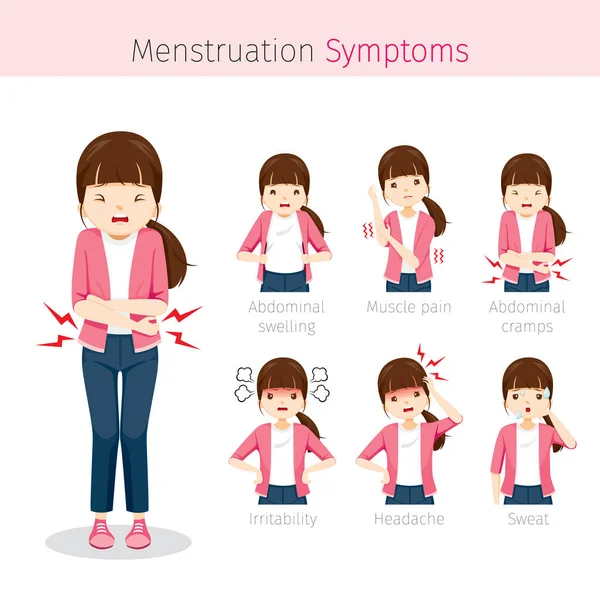 This allows direct visualization of the inside of the uterus
This allows direct visualization of the inside of the uterus Another good option, even in teens, is an intrauterine device (IUD) that contains a hormone called progesterone. These methods can be very effective in managing symptoms, even if patients are not sexually active.
Another good option, even in teens, is an intrauterine device (IUD) that contains a hormone called progesterone. These methods can be very effective in managing symptoms, even if patients are not sexually active. D.
D.


